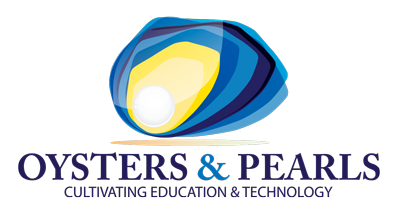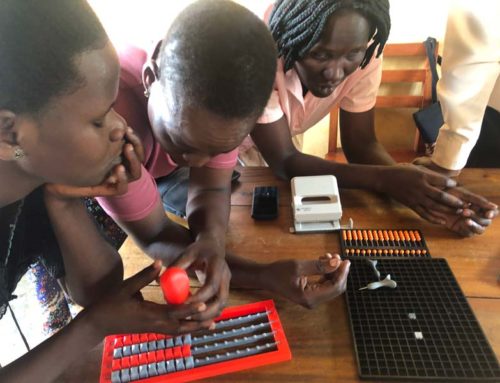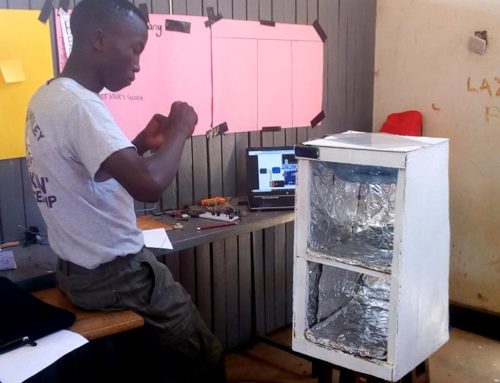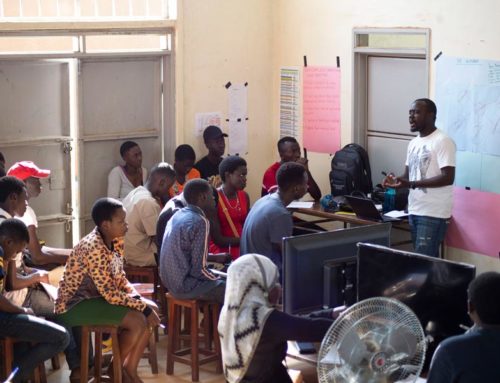It was great to be back in Gulu for my third time at the Oysters & Pearls holiday training. This was the first year we had an engineering camp designed just for girls! Eighteen girls attended the training, sixteen from secondary school and two from primary school level. In the beginning everyone was very quiet but they warmed up quickly by the end of the first day.
The first week the girls designed and created water filters. It was exciting and inspiring to watch their experimenting. Their engineering challenge was to:
Design a water cleaning process to provide clean drinking water to the girls’ dormitory.
The sample water we provided them was particularly unpleasant. We used tea leaves, mud, dirt, flowers and other various plant life, and some insects to create a nasty brew of “dirty water” that they had to clean. Their process had to include filtration and purification, and the success of their designs was evaluated based on budget, cleaning time, and quality of the water after cleaning. At the end of the week, a panel of nine teachers examined samples of the water after each team of students had cleaned it. The panel (including me) smelled the water, observed its appearance, shook it to see its clarity and particle content….and then bravely drank it to evaluate its flavor and safety. No one had diarrhea afterwards so that’s a testament to the girls’ success! But, boy oh boy, some of the water samples smelled downright terrible. And they tasted even worse. A few teachers refused to drink the ones that smelled particularly revolting. But the most intrepid judges (I am in this category, perhaps foolishly) tasted every single water sample. To my happy surprise, there was even one sample that had almost no discernible flavor at all, I was really impressed by the filtration quality that team had achieved.
Week #2 was even more exciting though! The second engineering challenge was to address the problem of limited firewood by designing and creating solar cookers using a very small budget. It was AWESOME. Seriously, very inspiring. Most of the teams ended up using metal rubbish bins they found around the school campus. They cleaned them out, lined them with leaves and soil for insulation, put cooking pots in them sealed with plastic wrap and created big wings made of cardboard covered in aluminum foil to reflect light into the cooker and onto the pots. We also put out a control pot all alone on its own with no cooker. In the heat of the first day of testing, the control pot got as hot as 35 degrees Celsius (95 degrees F) and the solar cookers got as hot as 42 degrees (108 degrees F). By the second day the control pot again went up to 35 degrees C but the solar cookers got up to 70 degrees C (158 degrees F). And by the third day, the control pot was still the same but the solar cookers were up to 85 degrees C (185 degrees F)!!! That’s not quite boiling yet but it’s hot enough to pasteurize/purify water. The girls had originally hoped to cook on their solar cookers but settled for bringing hot water back to the dorms to have hot water baths! There is no electricity in the dorms so hot water in their bucket baths is a huge luxury. They were VERY excited.
Accompanying the American teaching team were three teachers from Gulu Primary School: Teacher Chris, Teacher Kennedy, and Teacher Albert. I met these teachers over a year and a half ago when Oysters & Pearls first flew me to Uganda to teach engineering at their blind-inclusive school. It was so much fun to connect with them again and really humbling and inspiring to watch them lead many of the engineering lessons independently. The engineering education partnership between these devoted and hard-working science teachers and Oysters & Pearls has only continued to grow and strengthen! I am so thrilled to continue to be a part of it.



